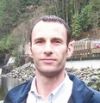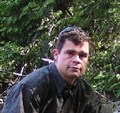APPLICATION OF WATER BALANCE TARGETS: “We are moving from guidelines to tools,” stated Corino Salomi, Department of Fisheries & Oceans, in 2010 when he reflected on the evolution of the Water Balance Methodology and a science-based approach to rainwater management in British Columbia

“The purpose of the ‘Beyond the Guidebook’ initiative is to help local governments and the development community establish what level of rainwater runoff volume reduction makes sense at the site, catchment and watershed scales. The objective is to protect stream health, which is broader than how much volume one can infiltrate on a particular development,” stated Corino Salomi, “Drainage practice is at a crossroad in the path defining the methodologies and applications used in rainwater management. “










